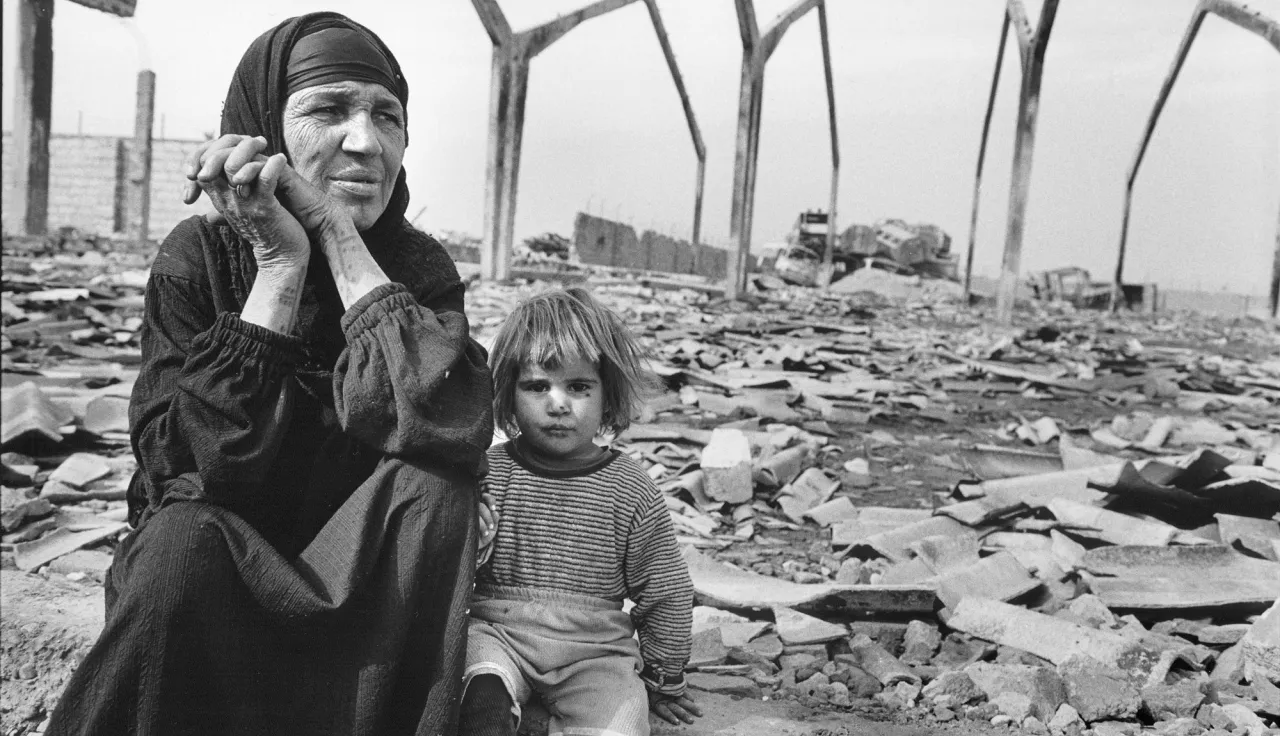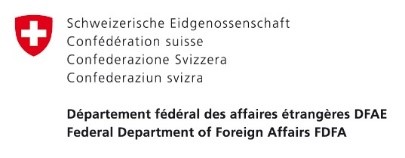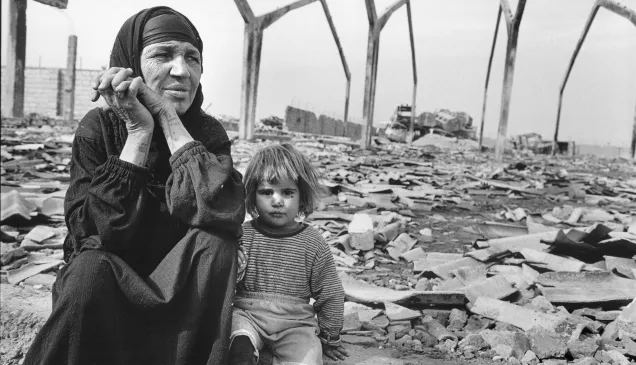War in cities: Towards a holistic response

On 28 November, as part of a two-day symposium entitled "War in Cities", the International Committee of the Red Cross (ICRC), the International Institute for Strategic Studies (IISS) and the Swiss Federal Department of Foreign Affairs (FDFA) held an expert panel discussion at the at the Humanitarium. The panelists discussed the major challenges posed by military operations in urban environments today and reflected on measures that needed to be taken to reduce the cost to human life and livelihoods. The discussion focused on how conflict affected cities and society as a whole, and the role architecture plays in urban warfare.
Opening remarks
- Peter Maurer, President of the ICRC
- Pascale Baeriswyl, State Secretary of the Federal Department of Foreign Affairs, FDFA
- Bastian Giegerich, Director, Defence and Military Analysis Programme, IISS
Moderator
- Vincent Bernard, Editor-in-Chief, International Review of the Red Cross, Head of Law and Policy Forum, ICRC
Panelists
- David Kilcullen, Senior fellow, Future of War program at the New America, Washington D.C.
- Helen Durham, Director of International Law and Policy, ICRC
- Marwa Al-Sabouni, Architect and author of "The battle for Home"
Panel discussion
Peter Maurer gave an overview of the worrying trends in conflicts in recent years, including the fragmentation of actors and the proliferation of mutually reinforcing forms of violence. He said that violence had a devastating impact on civilians and essential infrastructure, and forced thousands to flee their homes. "The cumulative impact of prolonged conflict is of particular concern to us," he said. "It is particularly worrisome that these conflicts are moving into densely populated cities. This is why we must work towards fostering greater respect for international humanitarian law. Through continuous bilateral and multilateral dialogue, we must urge parties to conflicts to take necessary precautions before launching attacks." Mr Maurer also said that the humanitarian community needed to work together to improve its response in the complex environment of cities. "The humanitarian response in urban settings needs to marry short- and long-term approaches, individual and systemic approaches, and humanitarian and developmental approaches."
Pascale Baeriswyl began by underlining that all parties to the Geneva Conventions shared a responsibility for ensuring compliance with humanitarian law. "It is essential," she said, "to garnish political will for prevention efforts and engage in mediation processes in the early stages of a conflict, as this will help to prevent the escalation of violence. To protect civilians, it is especially important to try to establish dialogue with non-State actors and encourage them to uphold humanitarian law, as they often control large territories in cities." She also emphasized that States should redouble their efforts to improve understanding of forced displacement, so as to take part in discussions on sustainable solutions for host communities and those forcibly displaced, ahead of the adoption of the Global Compact on Refugees and Global Compact on Migration.
Bastian Giegerich stated that as more and more people moved to cities, conflicts would become increasingly urban. As the urban environment seemed to facilitate protracted conflict, there would be major challenges in rebuilding both infrastructure and societal cohesion. "If urban warfare is the new normal, we need to think harder about operational, humanitarian and legal implications to attain a holistic response across disciplines and bring a wider range of expertise to this complex phenomenon," he said.
Marwa al-Sabouni talked about the link between architecture and conflict and presented her observations of her hometown Homs. "In Syria," she said, "segregation manifested itself in the building of ghettos around urban centres. The way they were built, and their location, alienated people and created divisions in communities based on religion, origin, class or all of these factors combined." She explained how that had resulted in a tribal system, which was the opposite of urbanization. In tribal societies, people felt a sense of belonging to their group, but not to society as a whole. That could lead to different groups taking up arms because they felt threatened; indeed, the ghettos were the first areas to erupt into fighting. "The way we build our cities can spark conflict in a crisis or help prevent tensions between different groups," she said. Architecture also played an important role in creating a sense of identity and belonging. As such, "civil wars, and the destruction they cause, can create an identity crisis," she said. Steps could be taken before, during and in the aftermath of war to mitigate the effects of conflict on the fabric of urban communities. "There is a growing awareness of how urban planning and architecture influence social dynamics. Therefore, it is crucial to understand the nuances of the dynamics in different communities, especially for humanitarian workers wanting to help a society recover after conflict."
David Kilcullen said that changes in contemporary warfare and technology called for a new approach to dealing with conflicts, both now and in the future. He reminded the audience of what had happened in Baghdad in 2007. At the time, he was senior adviser to General David Petraeus, who was heading the US-led coalition in Iraq. There was an armed group that was trying to bring about a moral collapse among different communities in the city, provoking one group to commit atrocities against another in order to create a self-sustaining cycle of violence. The military's main aim was to reduce violence against civilians, which it achieved, but not without cost. "The cure," as Mr Kilcullen described it, "was almost worse than the disease itself. We killed the city, by putting in 200 miles of concrete walls to seal the ghettoized communities off from each other and into their own boxes, just to break the cycle of violence. It was like a very large open-air prison." Continuing the metaphor, he added: "It stopped the bleeding, but ran the risk of killing the patient."
The Islamic State group had carefully analysed why that approach had worked and used it to their own ends in March 2013. "As they targeted the city of Mosul, they decided to use our own techniques against us," Kilcullen said. "They sparked a series of terrorist attacks in different parts of the city, leading the Iraqi military to install the same wall system as we had installed in Baghdad, with the same disruptive effect." The Iraqi military found themselves guarding checkpoints and unable to move freely around the city. "In June 2014, members of the Islamic State group turned up with tanks and took the city in a day," he said. "They had alienated communities from one another and limited their movements." In that way, the group had turned a strategy that had succeeded in containing violence in 2007 into a death trap for the entire city of Mosul. "This is an important story. It reminds us that, when dealing with war in cities, we need to know what our goal is: to preserve the city, rescue the civilians or defeat the other party. Depending on who you are – an urbanist, architect or member of the military – you will have different answers to these questions." He added that urban warfare was constantly evolving and strategies therefore needed to be continually reconsidered. The bottom line, he concluded, was that the city had to be seen as a living ecosystem, not as a piece of terrain.
Helen Durham added that cities were places in which people felt a sense of pride and where emotions ran high. When a city was tormented by conflict, not only was loss of life worrisome, but so too was the devastation of places with which people identified. "We are all aware of the visible destruction caused by conflict, but I would also like to flag up the damage that remains invisible," she said. She pointed to the destruction of water pipes and electricity grids, and the damage caused by reverberations from explosions in densely populated areas. Displacement was sometimes another hidden consequence of conflict, since it was not always easy to tell who and how many had been forced to flee their homes. The suffering and starvation of civilians during sieges were further examples of invisible damage. She underlined how International humanitarian law has great potential to reduce suffering during armed conflict: "First of all, the passive precaution obligation states that urban warfare should not occur, because parties to an armed conflict should avoid locating military objectives within or near populated areas," she said. In addition, parties to a conflict had the obligation to take active precautions. As part of those precautions, parties to a conflict were required to plan and gather information so as to understand the complexity of the urban infrastructure and map out the environment in which the conflict would take place. She concluded by saying that, "The ICRC urges armed forces to avoid the use of explosive weapons with wide-area impact in densely populated areas, due to evidence that the ICRC has gathered of their indiscriminate effects."



Baghdad. Woman and child in front of the remains of a warehouse destroyed by coalition forces bombing.
